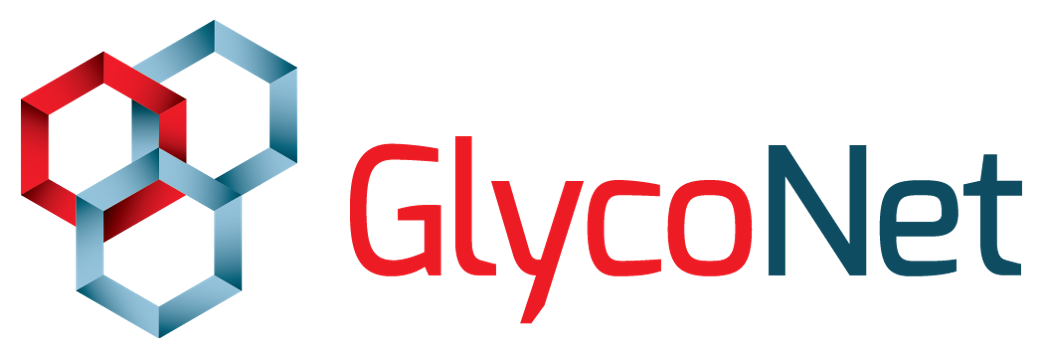
It’s all about monitoring sugar – but not in the way you may think

You’ve probably heard all about the genomics revolution; but as game-changing as it’s been to science, to our innovation economy, and to health, a new force is coming over the horizon that holds even greater power – a giant sugar wave called glycomics.
Glycomics is an interdisciplinary science focusing on the role of glycans (i.e., carbohydrates or sugars). From plants to animals, humans, and even bacteria and viruses, glycans coat the surface of every living cell – making them vital to virtually all biological processes. How we fight infection, how our bodies heal, how our immune systems protect us, and how our agricultural crops resist drought and pests are all impacted by glycans. In addition to being a component of DNA and RNA, glycans have extremely diverse structures and functions, and therefore offer a myriad of additional biological information complementary to genes and proteins. Glycomics can therefore unveil innovation potential across a multitude of commercial applications that wouldn’t be revealed by genomics and/or proteomics alone.
Through a 70-year history of glycan-based innovation (e.g. biomanufacturing of heparin to reduce blood clotting, and development of a next-generation vaccine for meningitis), along with significant recent investments in glycomics research, Canada has grown to be one of the world’s most impactful glycomics technology clusters. Canada has also gained a considerable competitive advantage in this field – one that can be leveraged as a major contributor to our health, food, and economic security.
Leading this charge has been GlycoNet. With support from the Networks of Centres of Excellence (NCE) Program, this leading pan-Canadian innovation organization (the only one providing unified leadership and integrated glycomics research, development, and commercialization services) has successfully mobilized our glycomics research capacity across the country. GlycoNet brings together, supports, and further builds on our leading expertise to translate research advances into tangible benefits for Canada.
“Glycomics is introducing a new era for life sciences,” says GlycoNet CEO Dr. Elizabeth Nanak. “And we have the opportunity to unlock the full power of this cutting-edge field. Through new strategic investments in crucial areas, we can collectively empower innovative, home-grown solutions to some of the greatest global health and sustainable agri-food system challenges – which will in turn, solidify Canada’s position as a global innovation leader. Making that happen is what GlycoNet is here to do.”
One of those major challenges facing us is our aging population. While creating significant pressure for increased federal and provincial spending on health care and social programs, our rapidly aging population is simultaneously exerting downward pressures on labour force participation, meaning fewer working-age people driving the economy. Healthy aging has therefore never been more critical, not only to the quality of life of Canadians and their families, but also to our economy overall.
But glycomics offers us a vital tool to significantly mitigate this double-barrelled challenge.
Together with its partners across the country, GlycoNet is bridging the translation gap between research and industry, and delivering exceptional training in glycomics research and entrepreneurship, to harness the potential of glycomics in the development of novel vaccines, drugs, therapies, and diagnostics. The global market for these technologies is rapidly growing. Five of the top 10 global protein drugs on the market today, which are glycan-linked, reached a combined revenue of US$58 billion in 2020 (Fierce Pharma Special Report, 2021).
GlycoNet is bringing this heightened appetite for innovative and breakthrough technology to address some of the mostcostly health issues in our country. For example, the organization is deploying Canada’s glyco-immunology expertise to advance glycomics-based therapies for Parkinson’s and Alzheimer’s.
Alzheimer’s Disease (AD) is the most common cause of dementia affecting over 740,000 Canadians (Alzheimer’s association, 2022). The steadily growing population of those suffering from AD represents one of the most under-served markets globally – one that is estimated to reach over $6.3 billion by 2025 – as current treatments are only minimally effective and do not prevent damage to the brain or cognitive impairments. And with recurrent failure by several prominent disease-modifying agents such as benzodiazepines and anticholinergics, the need for enabling technologies to develop new treatments has become urgent.
Recent population- and genetics-based evidence suggests, however, that about 10% of people are born with a truncated form of CD33, a glycan- binding protein that makes them less susceptible to AD. By better understanding the role of CD33, identifying glycans that interact with CD33, and exploring how those interactions contribute to neurodegeneration, we may be able to forge new pathways toward developing therapeutics to combat AD progression. Through the support of GlycoNet, in partnership with the Alzheimer Society of Canada and the Canadian Institutes of Health Research (CIHR), network investigators led by Dr. Matthew Macauley, an associate professor at the University of Alberta, have developed a novel technology that poses great potential to elucidate finer details about CD33 and its function in AD, taking us closer to an effective therapeutic.
Since 2015, GlycoNet has also supported transformational work to develop quantitative tools for monitoring Parkinson’s Disease (PD) progression – toward addressing the current lack of tools to monitor this devastating neurological disorder in patients – and to accelerate development of new PD therapies. Led by Dr. David Vocadlo, a professor at Simon Fraser University, network investigators have focused on the key glycan-processing enzyme GBA, measuring disease-associated enzyme activities directly within living cells derived from patients’ skin. The resulting technology is now a key strategic and highly-valuable part of the technology pipeline of Canadian small/medium biotech enterprise Alectos, which recently secured a $700M licensing and collaboration agreement with Biogen for a novel GBA2 inhibitor.
From supporting our aging population to combatting antimicrobial resistance, to enhancing Canada’s readiness for future pandemics, or to enabling new sustainable food sources and/or biomanufacturing platforms, glycomics is clearly a game-changing force poised for its breakout moment, as genomics and proteomics were in previous decades.
“GlycoNet is growing Canadian glycomics in ways that echo the early genomics revolution in Canada,” concluded Dr. Nanak. “We are perfectly positioned and ready to translate Canada’s strengths in fundamental glycomics research into new technologies and high-growth firms in health, agriculture, materials, and environmental sustainability – and to keep Canada at the forefront of the next global life sciences revolution.”

The Canadian Glycomics Network (GlycoNet) is a Research Canada Member and Sponsor of the Game Changers in Health Research and Health Innovation: Focus on Aging – Panel Presentation and Parliamentary Health Research Caucus Luncheon. Click here to learn more.
